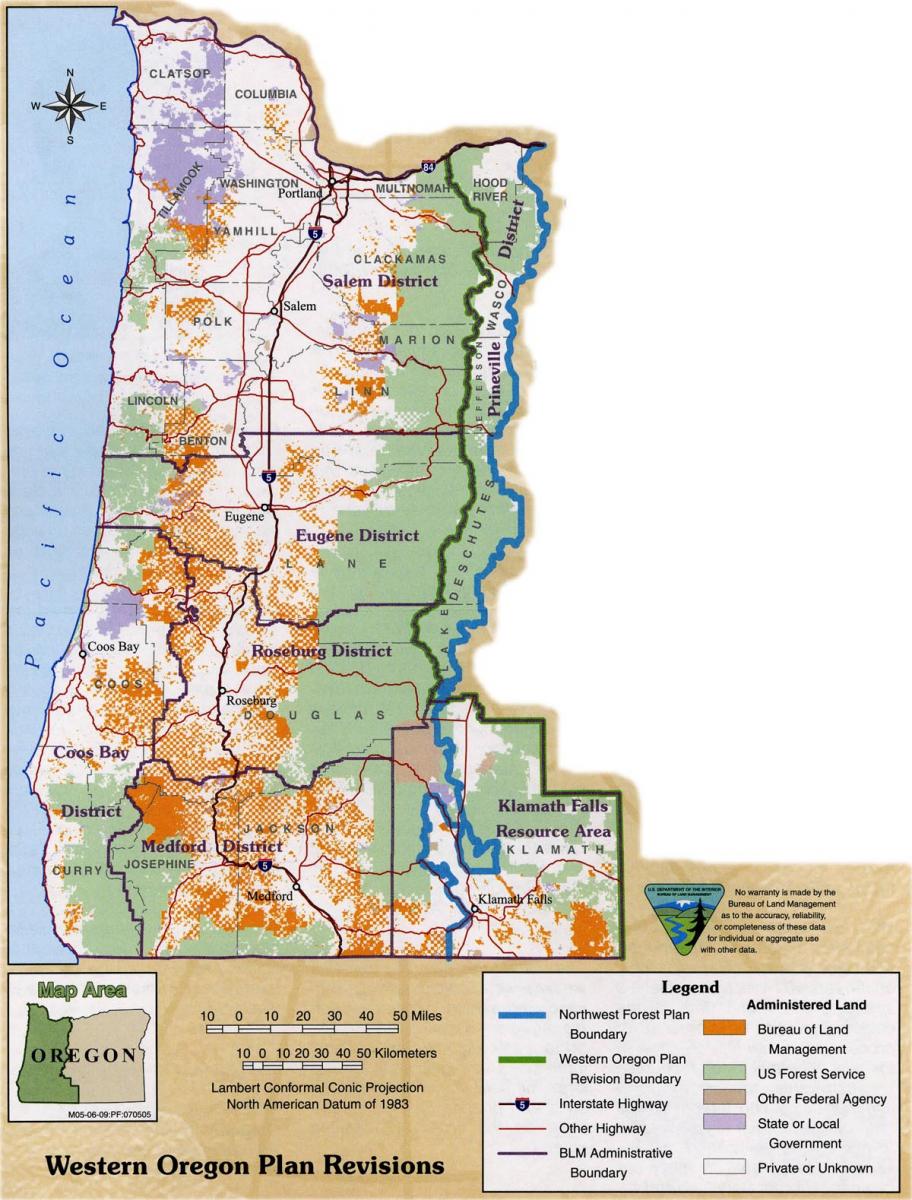The US Bureau of Land Management (BLM) is responsible for managing more than 2.5 million acres of public land in western Oregon that is currently managed under the Northwest Forest Plan. Historic logging has severely degraded much of this land, but hundreds of thousands of acres of pristine and unspoiled forests remain. These public forests are in our backyard in western Oregon, providing recreation, clean water, and numerous other public values.
Under the Bush administration, logging interests and the BLM worked together to put these heritage forests on the chopping block. The Western Oregon Plan Revision (WOPR for short) would have ramped up logging across the landscape and clear-cut some of our last old-growth forests. This plan would also have degraded habitat for fish and wildlife and threatened the quality of our drinking water.
Thanks to years of public involvement and opposition, and legal action by Oregon Wild and other groups, WOPR was withdrawn by the Obama administration and its demise sealed in recent court orders.
After the WOPR died, BLM management returned to the framework of the Northwest Forest Plan, under which it can implement the common sense program of watershed restoration including protecting mature & old-growth forests and thinning dense young stands. The BLM has largely been focusing on this restoration thinning in recent years.
What now?
The BLM underwent another planning process (what we're calling "WOPR Jr.") between 2012 and 2016. On August 5, 2016, the BLM issued a final decision, over the official protests of dozens of conservation groups and individuals. The new plan will guide decisions about how our BLM forests are to be managed. Unfortunately, it weakens protections for wildlife, old-growth forests and streams in order to increase logging levels by 37%. More intensive logging is on the menu for 20% of the landscape - increasing carbon emissions, damaging roads, and impacts to sensitive wildlife. Protected streamside buffers are cut in half.
- Read more in our 4-page summary of the proposed RMP.
- View a map and other info from the BLM here.
Over 4,000 comments on the draft plan were submitted by citizens and recreation, environmental, wildlife, timber, and other concerned groups in 2015. But a robust public process is not, in this case, an indicator that a plan will be widely accepted. On the contrary, groups on all sides have come out against the plan and both the timber industry and conservation interests are filing lawsuits to stop the implementation of the plan.
How did the RMP do in addressing our concerns?
Over the past few years, conservation groups and concerned citizens weighed in on the draft plans and asked BLM to include key conservation measures in their final plan. Thousands of comments did just that. How did the BLM do in addressing our key comments?
- Protect native forests over 80 years old from logging: FAILED
- About 85% of older forests are placed in reserves under the plan, but numerous loopholes – large enough to drive log trucks through – offer no guarantee that they’re protected from logging.
- 15% of old forests are in the “harvest land base” – meaning intensive logging is prioritized, and even the oldest trees aren’t necessarily protected from harvest.
- Focus on thinning in young stands instead of clearcutting old forests: FAILED
- In the “harvest land base,” 180,000 acres will be subject to clearcut-style logging that leaves just 10% of the trees standing. Another 90,000 acres will leave between 15 and 30% standing.
- 60% of the planned logging over the first decade will be done as modified clearcuts, while 40% will be commercial thinning. None of this logging is limited to young stands.
- Maintain strong stream protections and watershed restoration standards under the current Northwest Forest Plan: FAILED
- The plan eliminates the strong water quality and habitat provisions of the Northwest Forest Plan, reducing streamside no-logging buffers by half or more (a loss of 300,000 acres of streamside reserves). In addition, the “outer zone” of the reduced Riparian Reserves is available for logging, and areas currently protected as reserves can be clearcut under the new plan.
- Protect all proposed Lands with Wilderness Characteristics, Areas of Critical Environmental Concern (ACECs), and Wild & Scenic Rivers: PASSING
- While we give the BLM a passing mark on this, it’s not an “A”. Some ACECs are still open to logging, off-road vehicle use, grazing, and mining, and while all “Lands with Wilderness Characteristics” identified by the BLM are protected, there are thousands more acres that are worthy of this designation that the BLM did not include.
- Emphasize non-motorized and quiet recreation: FAILED
- While additional recreation areas are designated under the plan, in many of these areas logging and off-road motorized use take precedence and could diminish the types of recreation the vast majority of Oregonians enjoy.
- Maintain the Survey & Manage program to protect rare plants and animals: FAILED
- The program is eliminated from the proposed plan.
- Reduce road impacts: FAILED
- More than 400 miles of new roads would be built in the first decade of this plan, exacerbating problems for water quality, habitat fragmentation, and spreading invasive weeds.
 '
'

